Stop Killing Your Creeping Thyme: A No-Nonsense Guide to Getting it Right
I’ve been down in the dirt with plants for a long time, and if there’s one plant people dream about—and fail with—it’s creeping thyme. Everyone loves the idea of a beautiful, fragrant carpet of flowers that you barely have to touch. And you absolutely can have that! But I’ve seen so many people waste time and money because they get one crucial thing wrong.
In this article
Success with creeping thyme has almost nothing to do with what you do after you plant it. It’s 100% about the prep work you do beforehand.
This isn’t your average, forgiving groundcover. It has very specific needs because of where it comes from. So, let’s go beyond the little plastic plant tag and talk about what really works. We’ll cover the soil science, the pro prep techniques, and how to avoid the common pitfalls that leave you with a sad, patchy mess.
First, Let’s Understand This Plant
Before you even think about buying plants, you have to get inside thyme’s head. Most of the popular creeping varieties come from the sunny, rocky hills of the Mediterranean. Think dry, gritty, and baked by the sun. It’s a tough little survivor, not a delicate flower from a lush forest. This single fact dictates everything else we need to do.
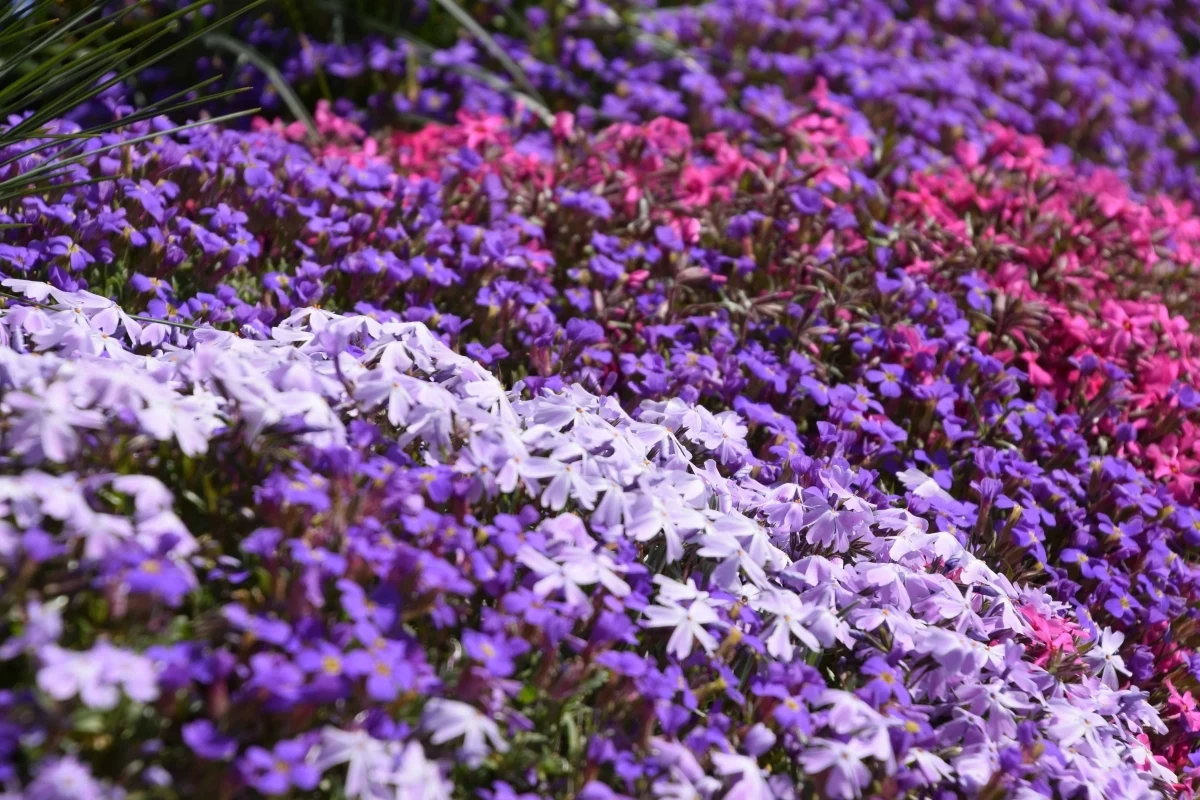
- The Roots: Creeping thyme has shallow roots designed to grab water fast from thin, gritty soil. They absolutely HATE sitting in wet, heavy muck. If you plant it in dense clay or a low spot in your yard, the roots can’t breathe. This leads to root rot, the number one killer of thyme. You’ll see a patch turn brown and mushy at its base, and by then, it’s usually too late.
- The Growth: It spreads by sending out little stems that creep along the ground, putting down new roots as they go. This is how it forms that classic dense mat. But because it sits so low, the main part of the plant (the crown) is right at the soil surface. Piling traditional wood mulch against it is a death sentence—it traps moisture and causes rot.
- The Flowers: Those gorgeous pink and purple flowers are the plant’s big energy expense for the year, and that energy comes from one place: the sun. Not enough sun? You’ll get weak, sparse flowers and a ‘leggy’ plant with long, sad-looking stems. It’s literally stretching for more light. By the way, those flowers are a massive draw for bees, so a healthy patch is a big win for your local pollinators.
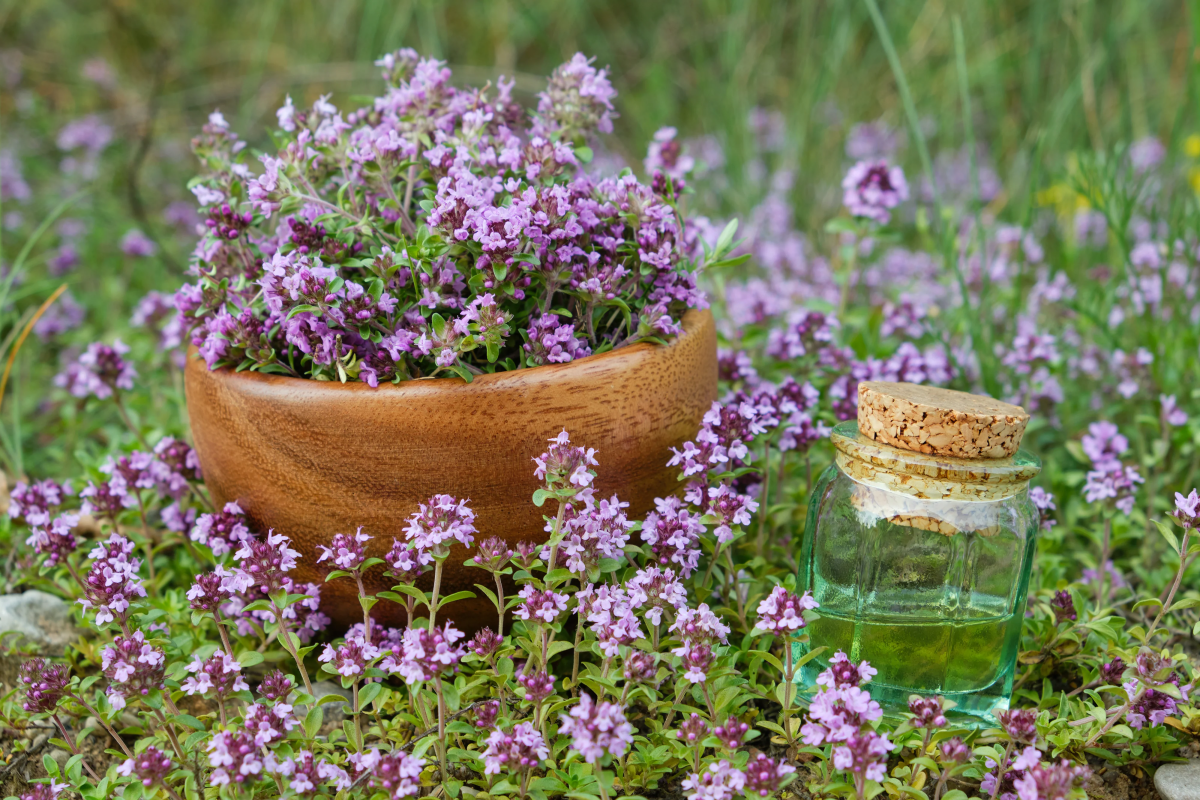
Choosing the Right Thyme for the Job
Okay, not all creeping thymes are the same. When I’m helping someone choose, I always ask: what is this plant’s job? Is it just for looks, or do you need it to handle a little wear and tear?
For Areas with Light Foot Traffic:
If you’re planting between stepping stones, you need something tough and dense. A great choice is Red Creeping Thyme. I find it holds up really well once established and has these vibrant magenta flowers. Another popular one is Elfin Thyme; it’s one of the tightest, lowest-growing types, perfect for filling small gaps. But let’s be real: “light foot traffic” means a few careful steps a day. This is not, and will never be, a replacement for a turf lawn where kids and dogs play.
For Color and Groundcover:
If you just want a beautiful, spreading groundcover on a slope or in a bed, you have more options. Pink Chintz Thyme is a workhorse—it grows vigorously and has lovely salmon-pink flowers. Then you have Woolly Thyme. It’s stunning, with soft, fuzzy, silver leaves. BUT, and this is a big but, it’s the most high-maintenance of the bunch. Those fuzzy leaves trap moisture, making it extremely prone to rot in humid climates. Honestly, unless you live somewhere dry, I’d probably steer clear of this one. It rarely survives a humid summer.
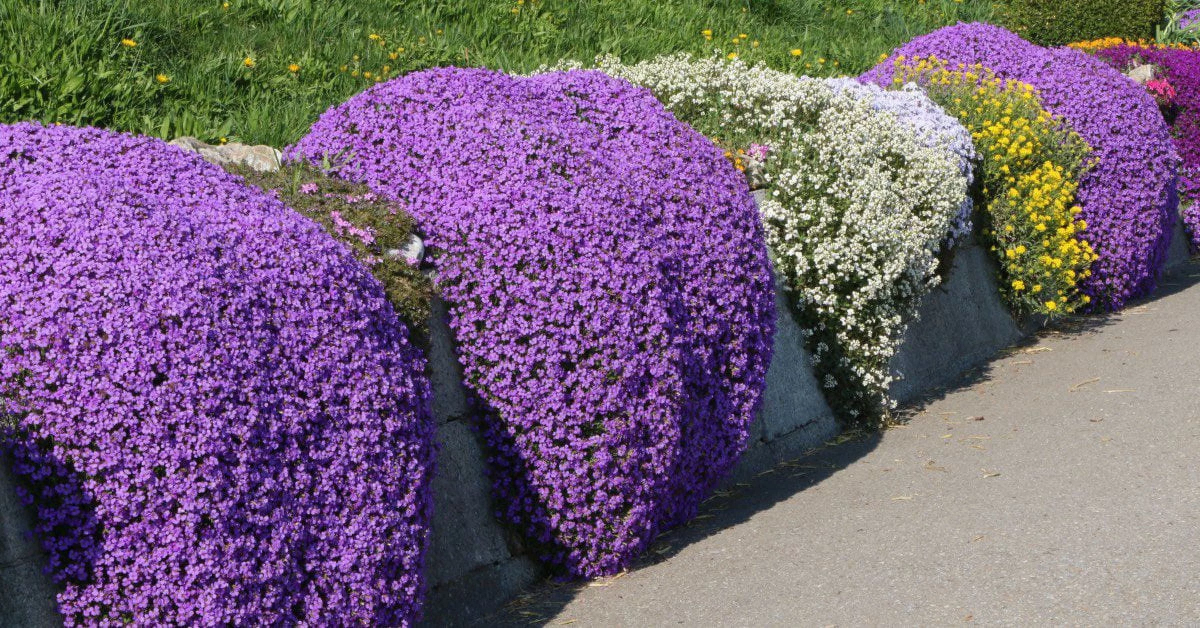
Site Prep: Where 80% of the Work Happens
If you only listen to one piece of advice in this whole guide, let it be this: Your success is decided before a single plant goes in the ground. I spend most of my time on a thyme installation just preparing the site. Get this right, and you’re golden.
Heads up! Test your drainage first.
You have to know if your soil is a friend or foe. Dig a hole about a foot deep and a foot wide. Fill it with water and let it drain completely. Then fill it again and time how long it takes to empty. You’re looking for the water level to drop by at least an inch per hour. If water is still standing in that hole after 4-5 hours, you’ve got a drainage problem that must be fixed.
Fixing Your Soil (The Right Way)
This is where people make expensive mistakes. For heavy clay soil, DO NOT just add sand. You’ll create a substance that’s basically low-grade concrete. I once had a client who insisted on it, and a year later we were back with pickaxes breaking up the mess. Don’t be that person! The right way is to dig out the top 6-8 inches and mix that clay with equal parts compost and a grit component. My go-to is poultry grit (from a feed store) or 1/4-inch pea gravel. This lightens the whole structure.
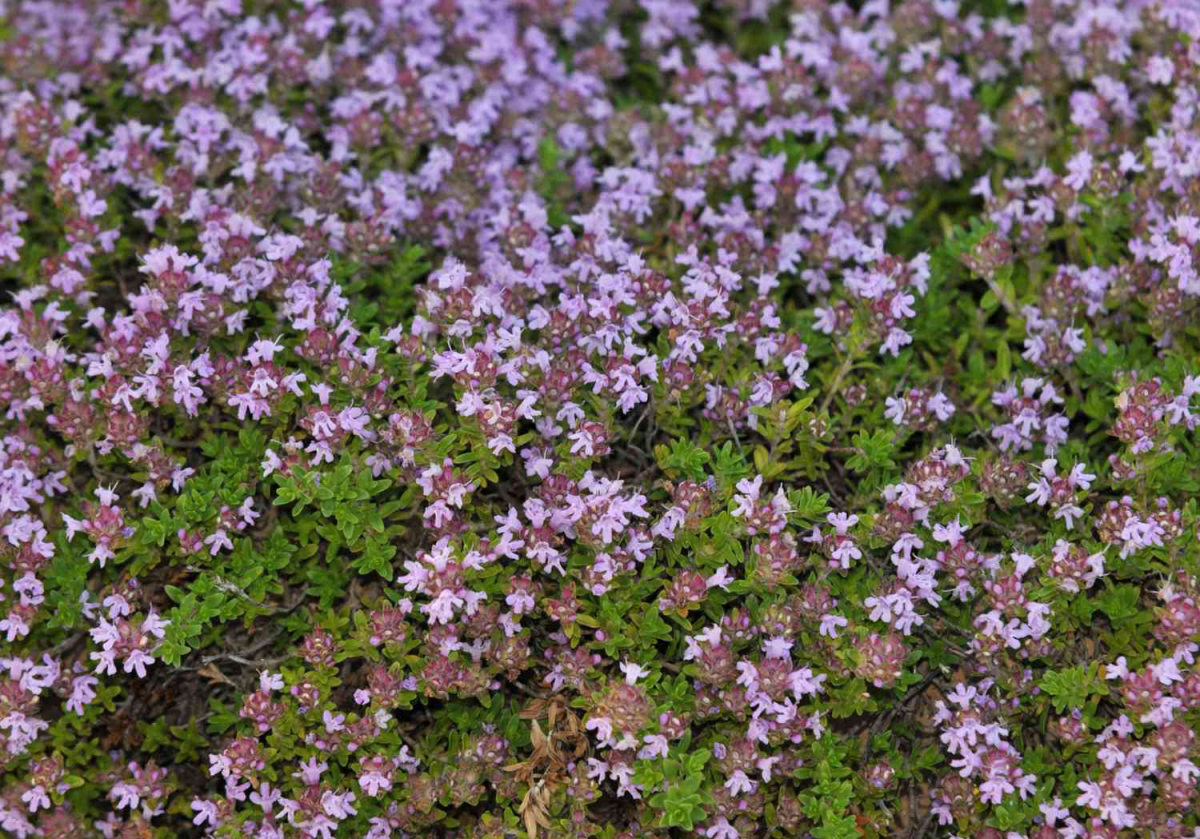
If your soil is already decent, you might just need to work in some grit and compost to give it that perfect texture. And if you have sandy soil, your main job is adding nutrients. Mix in some good quality compost to help it hold just a little moisture and food.
Finally, you must get rid of every single weed. Thyme is not a bully; it won’t choke out established weeds. They will always win. For a large area, you can cook them out by covering the watered soil with clear plastic for 6-8 weeks in the summer (a technique called solarization). For smaller spots, you just have to get on your knees and pull them all out by the root.
Planting for a Fast, Lush Carpet
Okay, your site is prepped and you’re ready to plant. Let’s get this done efficiently.
What to Expect: Time & Money
First, a reality check. I strongly advise buying small plants, often called plugs, instead of trying to grow from seed. It’s way more reliable. These plugs usually cost between $2 and $4 each, depending on the variety and size.
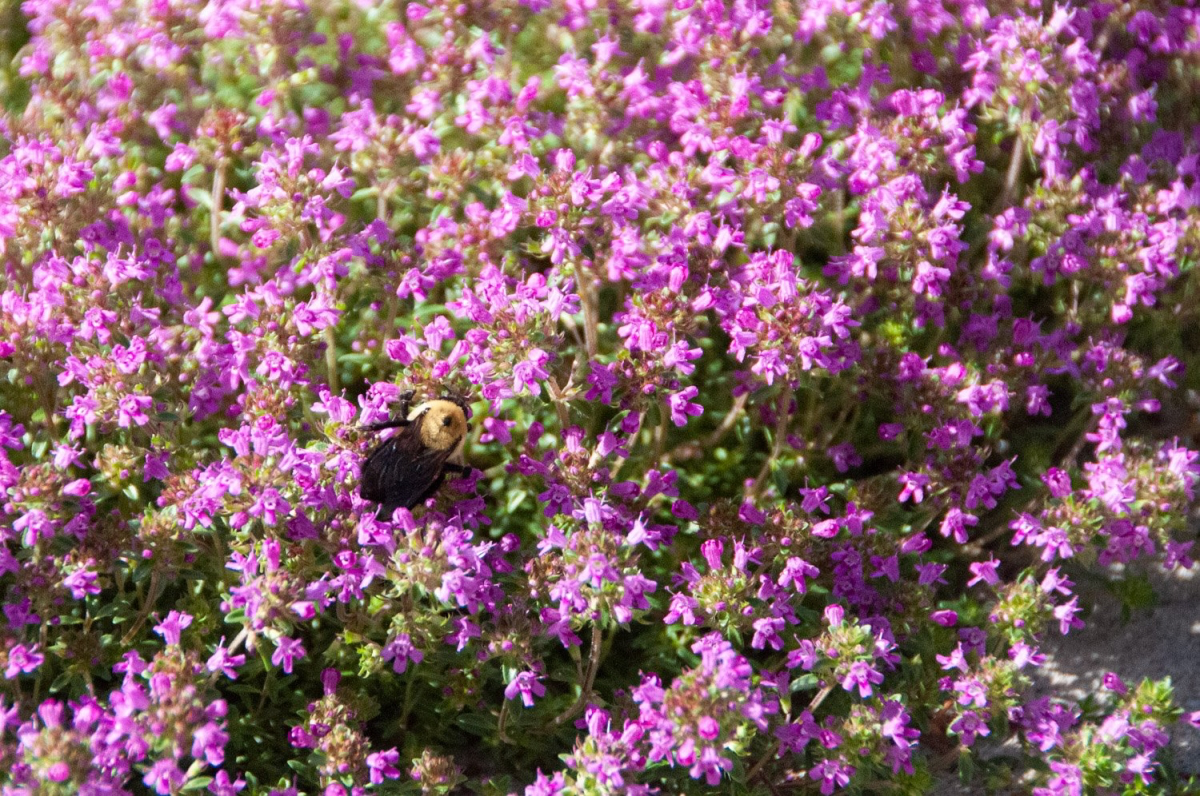
So, how many do you need? Here’s the math:
• For quick results (fills in one season): Space plants 6 inches apart. You’ll need 4 plugs for every square foot.
• For a budget-friendly approach (fills in two seasons): Space them 12 inches apart. You’ll need 1 plug per square foot. You’ll save money on plants but spend more time weeding while you wait for it to cover.
As for timing, the best time to plant is in the spring. This gives the thyme a full growing season to get its roots established before winter. Fall planting can work in milder climates, but it’s a bit riskier.
Quick Shopping List Example: For a 50 sq. ft. area on clay soil, aiming for quick coverage, you might need: 200 plugs (50 sq ft x 4 plugs/sq ft), around 4-5 large bags of poultry grit (maybe $15/bag at a farm supply store), and a few bags of compost (around $10/bag). The initial investment is real, but it’s for a long-term payoff.
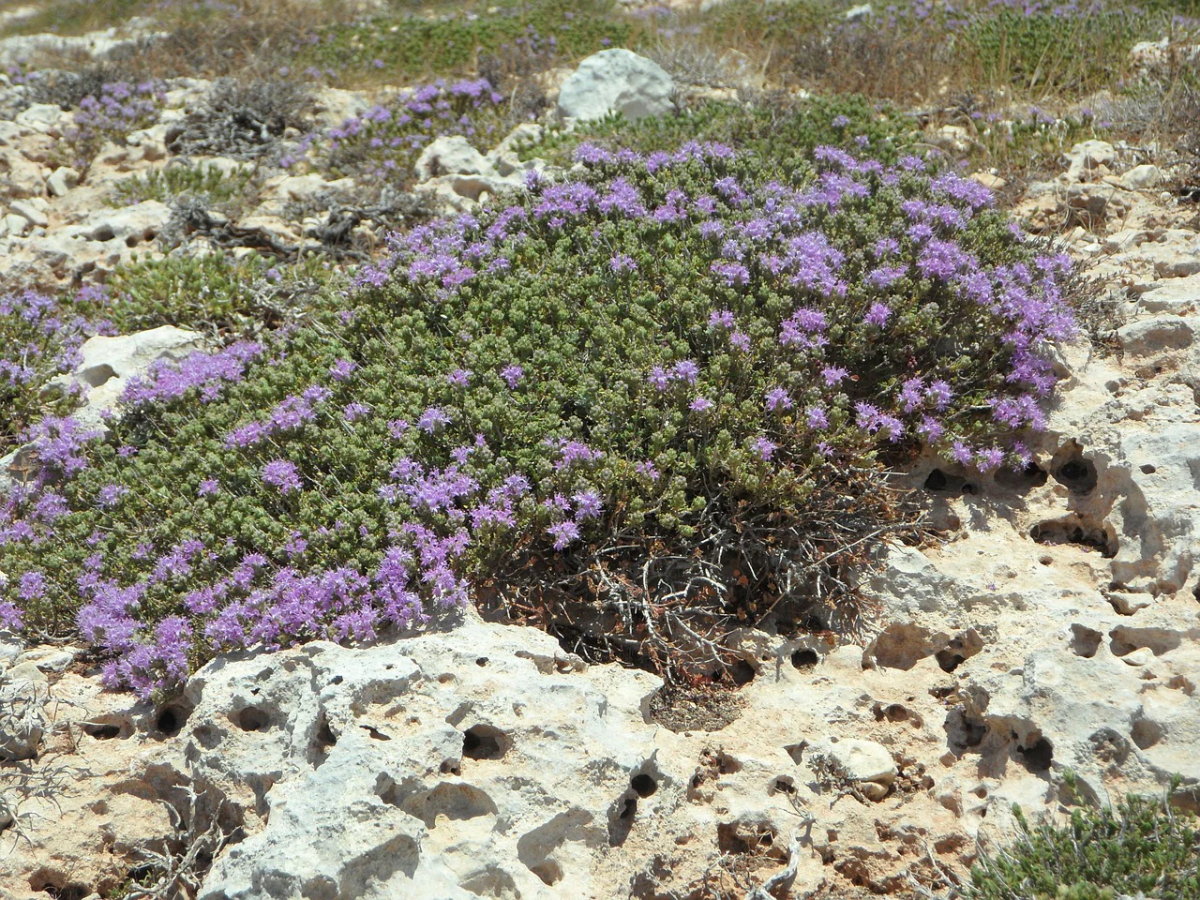
The Planting Process
When you plant, find the crown (where stems meet roots) and make sure it’s sitting at or even slightly above the soil level. Burying the crown is the #1 rookie mistake and will cause it to rot. After planting, water everything deeply once to settle the soil. Then, for mulch, use a one-inch layer of pea gravel or poultry grit. It keeps the leaves dry, stops weeds, and looks fantastic. Avoid bark mulch completely!
Keeping Your Thyme Happy for Years
Once it’s established, the hard work is over. Now it’s just minor upkeep.
You’ll need to water it semi-regularly the first year, but after that, it’s very drought-tolerant. A good rule of thumb: if the leaves look a bit dull or grayish, it’s thirsty. And please, do not fertilize it. Thyme thrives on neglect. Fertilizer just makes it weak and floppy.
The most important long-term task? Give it a haircut. About a week after the main flower show is over, use shears or a string trimmer on a high setting to trim the whole patch back by about a third. This is a game-changer. It prevents the plants from getting woody and dying out in the middle, and it encourages a new flush of thick, healthy growth.
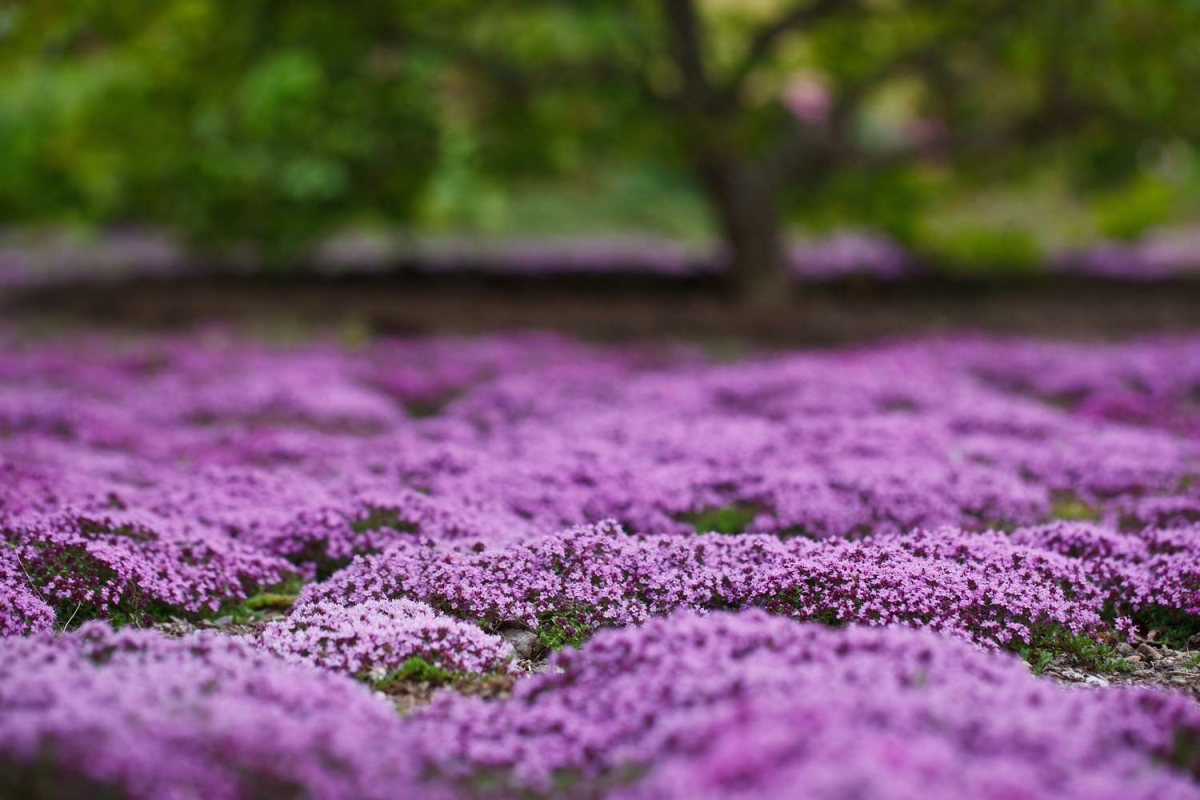
If you do get a bare patch (it happens!), just rake out the dead stuff, mix in a little more grit to fix the likely drainage issue in that spot, and pop in a few new plugs. They’ll fill in before you know it.
Galerie d’inspiration
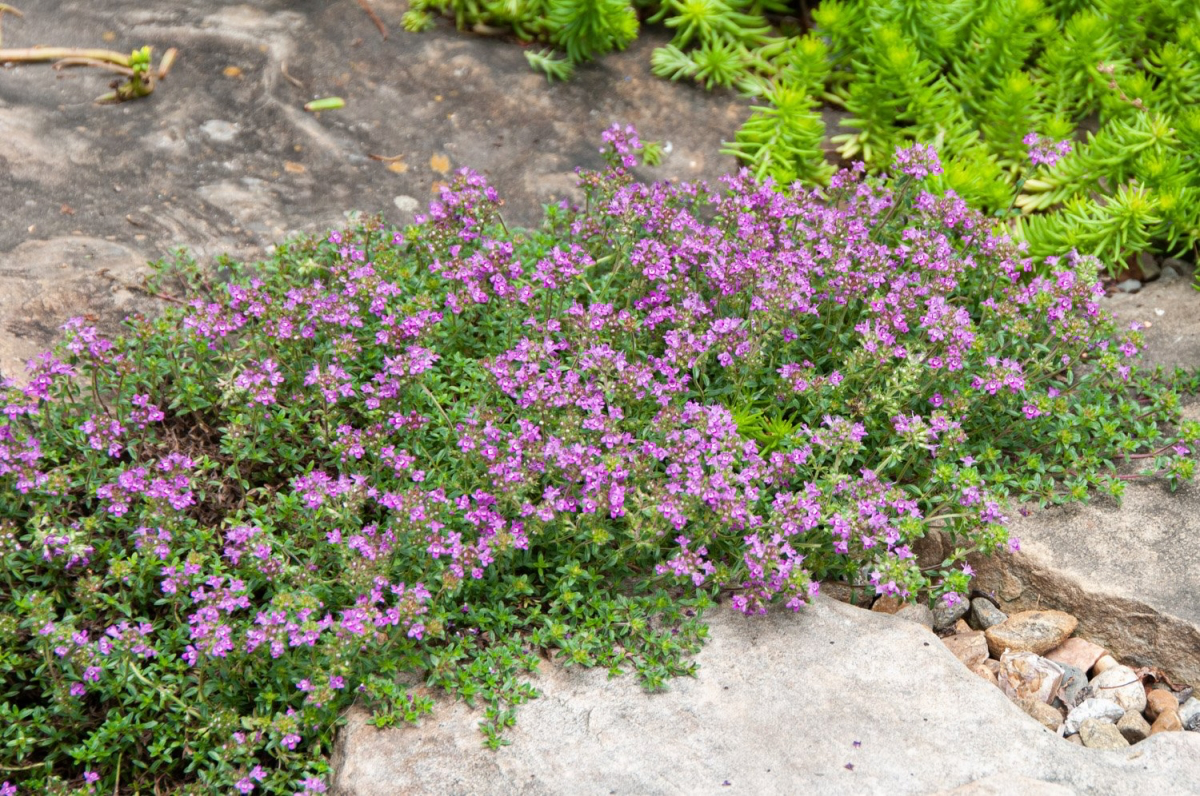
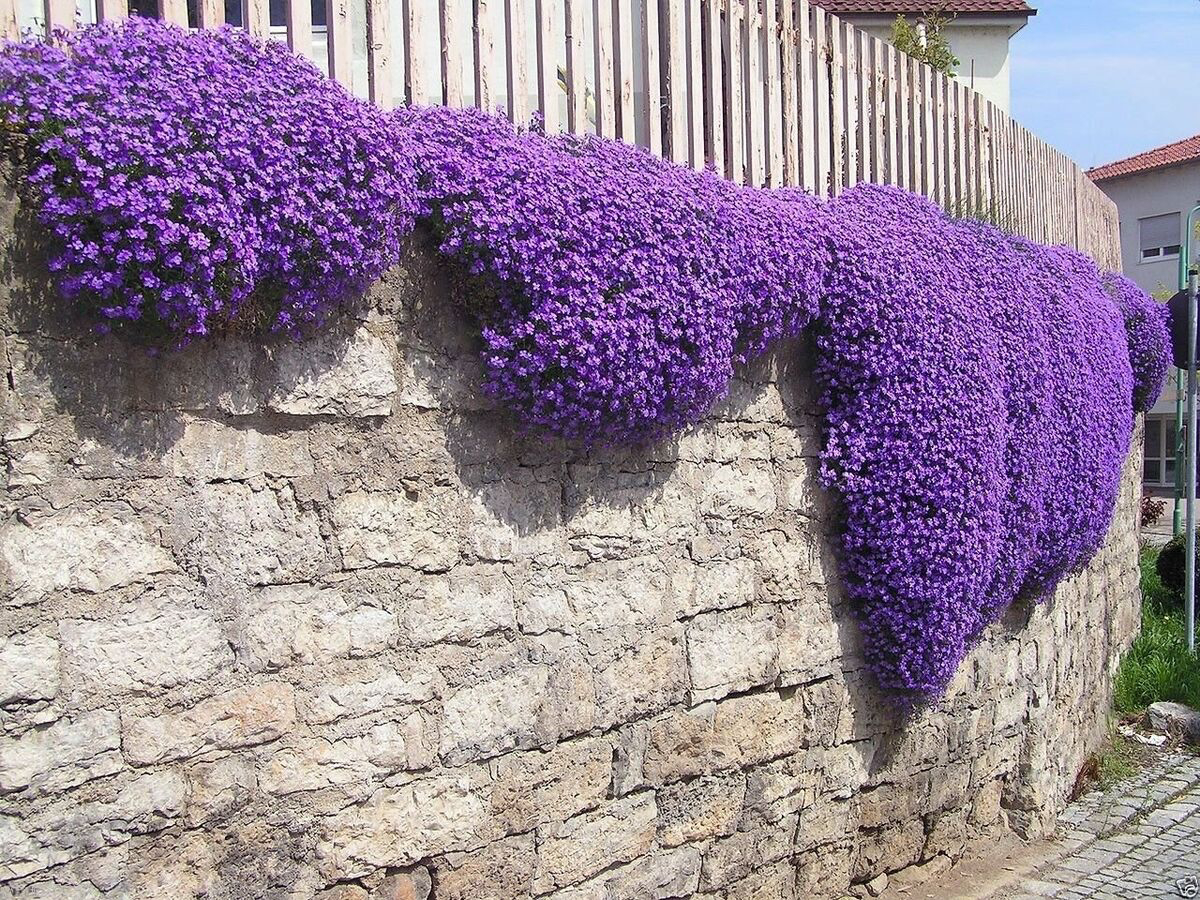
‘Elfin’ Thyme: Ideal for a tight, dense, miniature look between pavers. It’s a slow, controlled spreader that forms a perfect, moss-like cushion with very few pale lilac flowers, focusing on foliage.
‘Red Creeping’ Thyme (Coccineus): Choose this for faster, more aggressive coverage on sunny banks. Its stunning magenta-red flowers create a bold, dramatic carpet of color.
Ultimately, pick ‘Elfin’ for detailed, intricate spaces and ‘Red Creeping’ for a vibrant, low-maintenance groundcover.
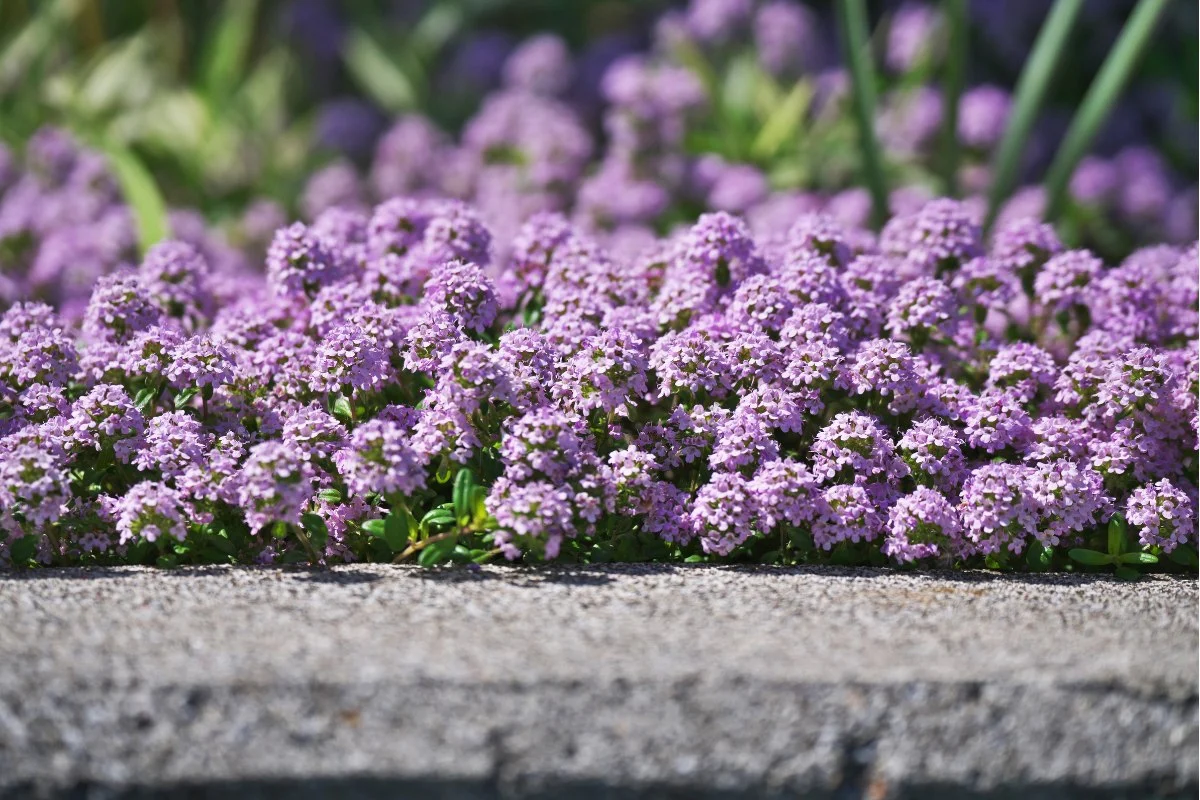
A single square meter of flowering thyme can attract hundreds of bees in a single day.
Your thyme patch is more than just pretty; it’s a high-value service station for essential pollinators. The mass of tiny, nectar-rich flowers provides a critical food source for honeybees, bumblebees, and native solitary bees, especially in early summer. By letting it bloom, you are actively supporting the health of your local ecosystem.
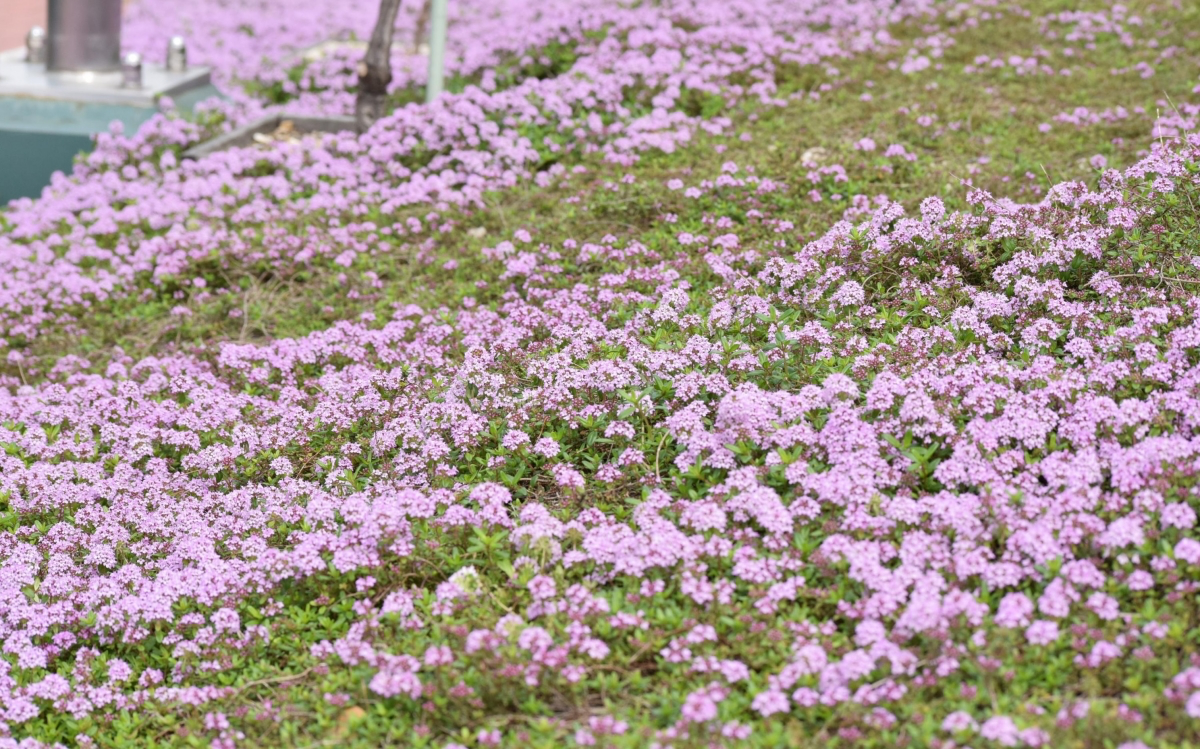
If your garden soil is heavy clay, don’t give up. Creeping thyme thrives in containers! A wide, shallow terracotta pot or a stone trough creates the perfect, well-drained environment it craves. Use a quality cactus or succulent potting mix, like the popular blend from Espoma, and let the thyme spill over the edges for a beautiful, cascading effect on a sunny patio.
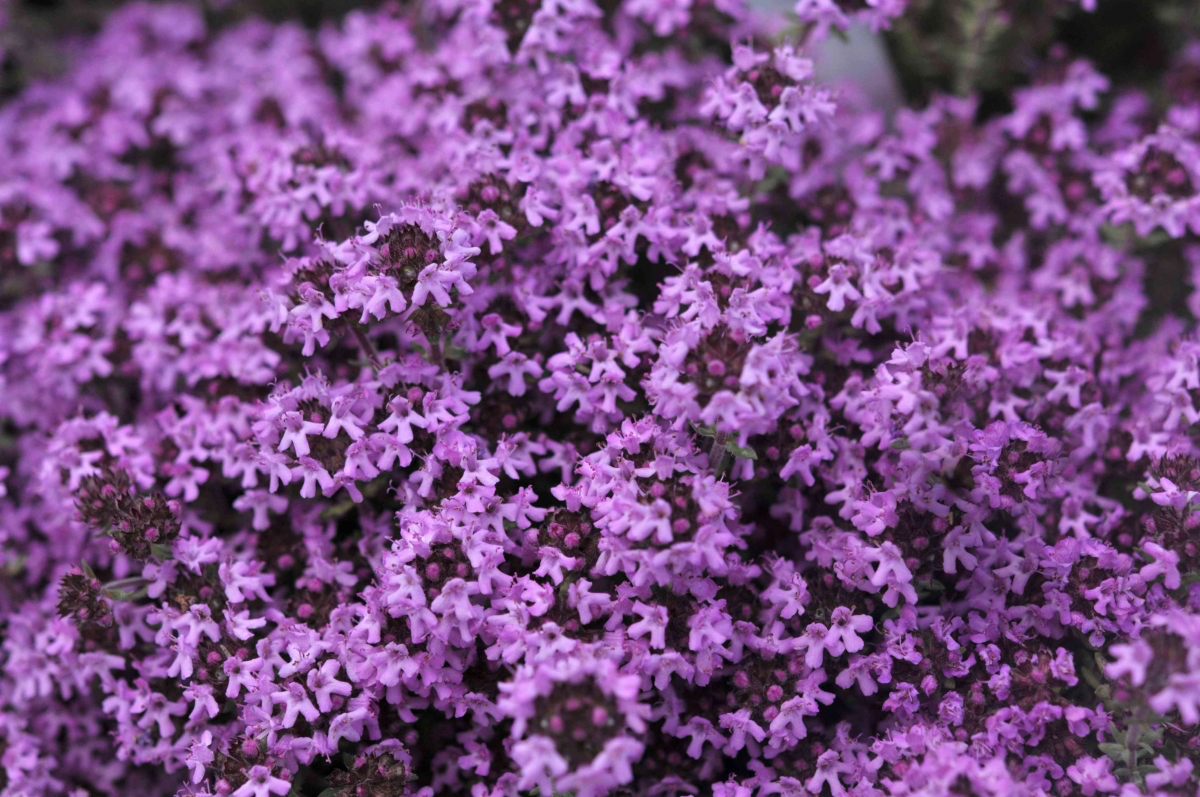
- Requires significantly less water than traditional turf.
- Eliminates the need for weekly mowing and fertilizing.
- Stays fragrant and green even in hot, dry spells.
The secret to this low-effort beauty? Replacing a section of your high-maintenance lawn. A creeping thyme lawn is a long-term investment in a more sustainable, ecologically friendly, and far more sensory garden experience.
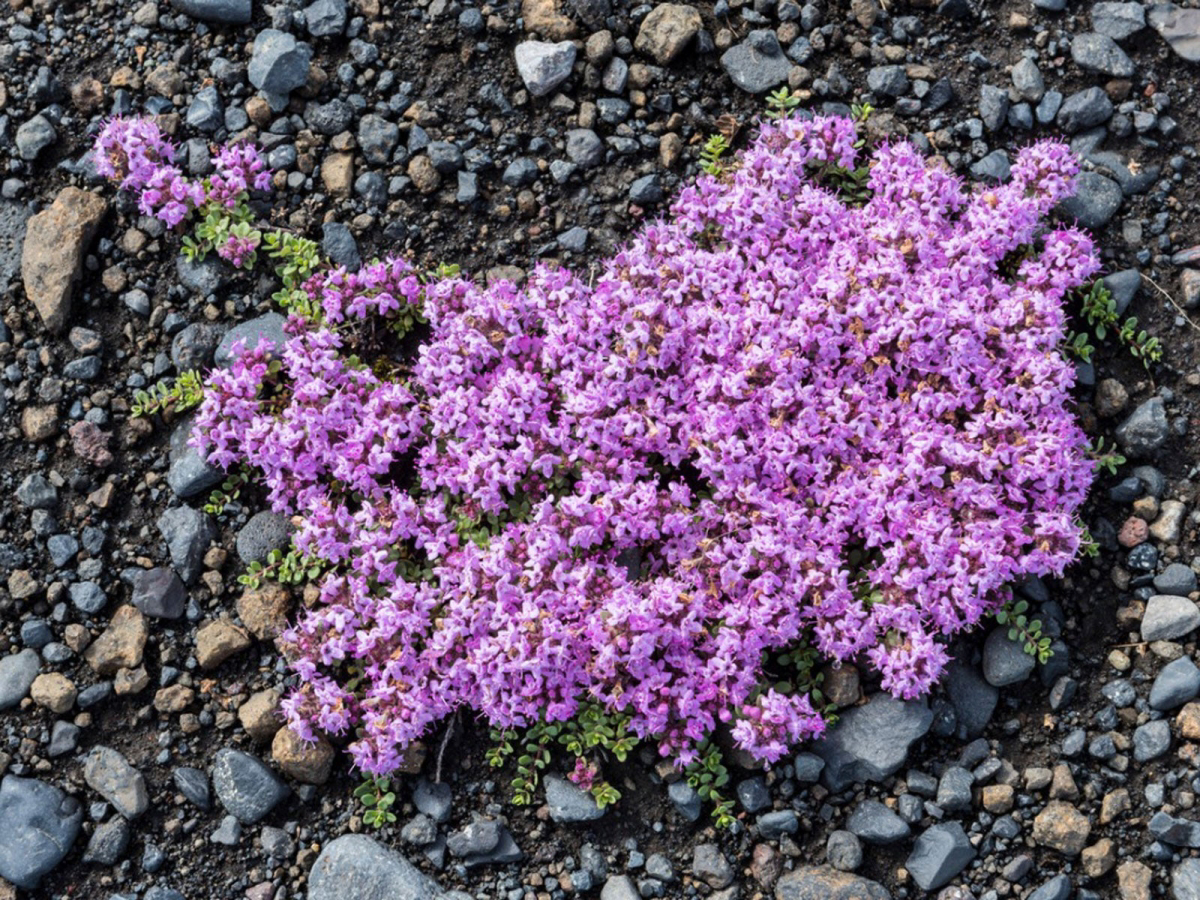
Why does a thyme path feel so magical to walk on?
It’s an olfactory experience. Gently crushing the leaves of creeping thyme releases thymol, its primary essential oil. This is the same compound that gives culinary thyme its characteristic warm, earthy scent. Planting it along a walkway isn’t just a design choice; it’s a way to create an interactive garden that engages more than just your eyes.
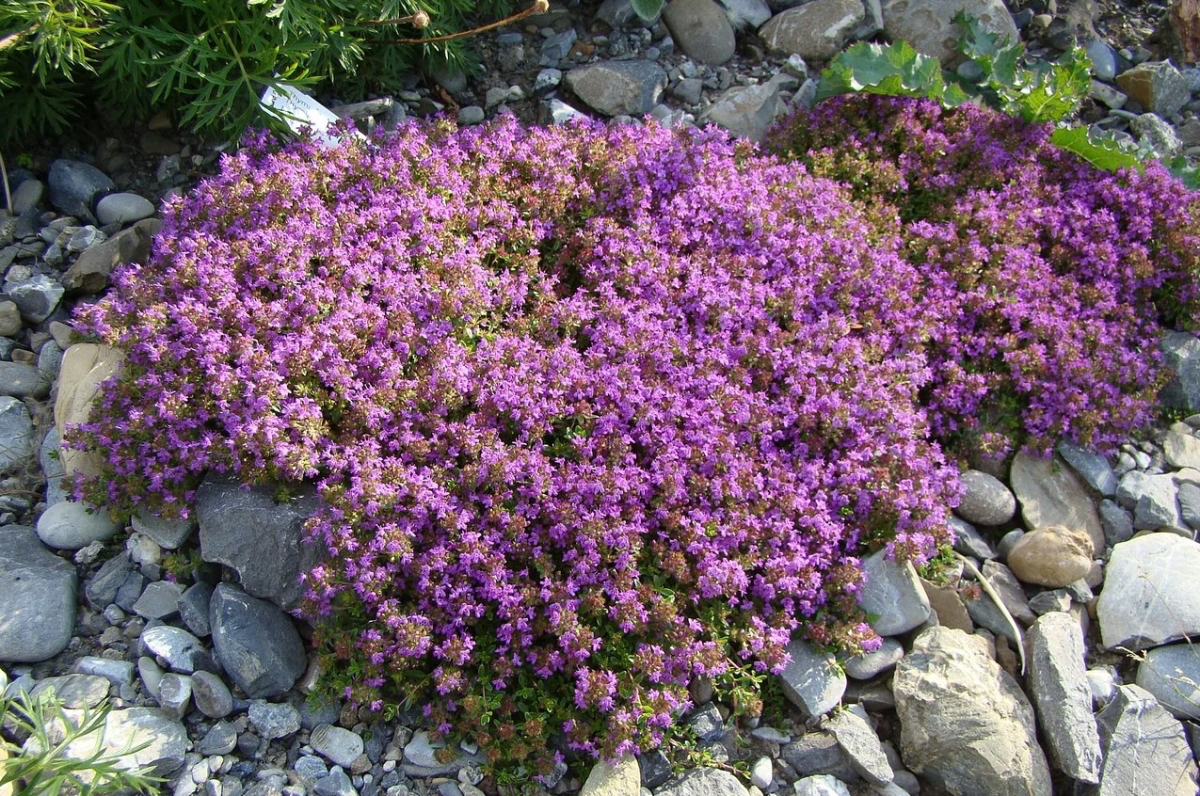
The one thing to do religiously: weed before it’s established. A young thyme patch simply cannot compete with aggressive perennial weeds for light, water, and nutrients. That first season is a race. Once your thyme forms a dense, interlocking mat, it will naturally suppress most new weed growth, but those first few months are critical. Your future self will thank you for the diligence.
To create the perfect gritty soil mix that thyme loves, think like a baker following a recipe. Your goal is instant drainage. Combine:
- 5 parts of your native garden soil
- 4 parts of coarse horticultural sand or builder’s grit (never play sand)
- 1 part finished compost for a touch of fertility
Mix it thoroughly before planting. When you water, it should disappear almost immediately.










